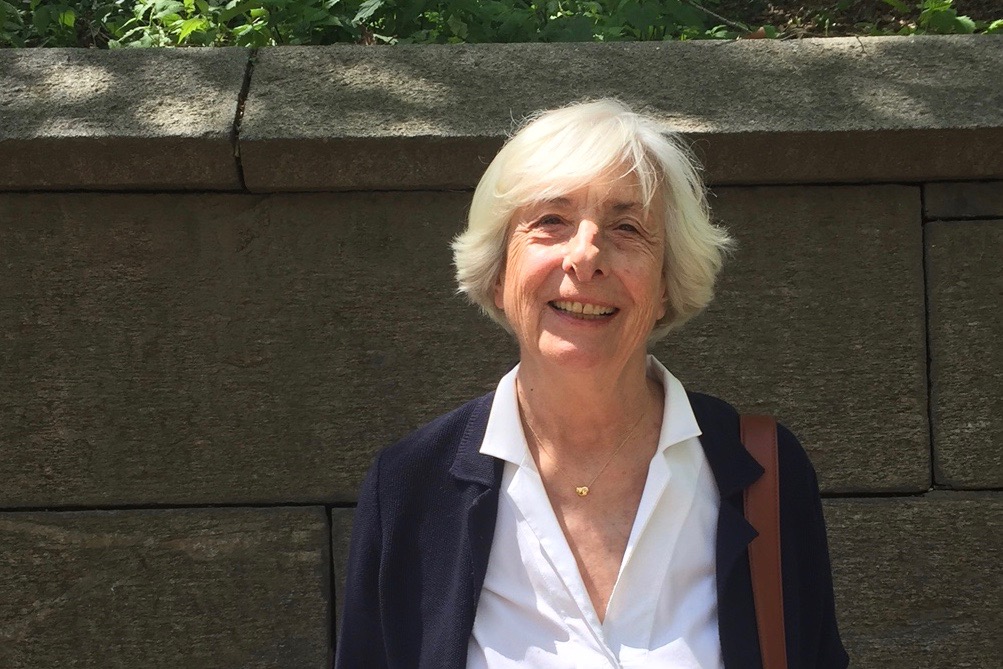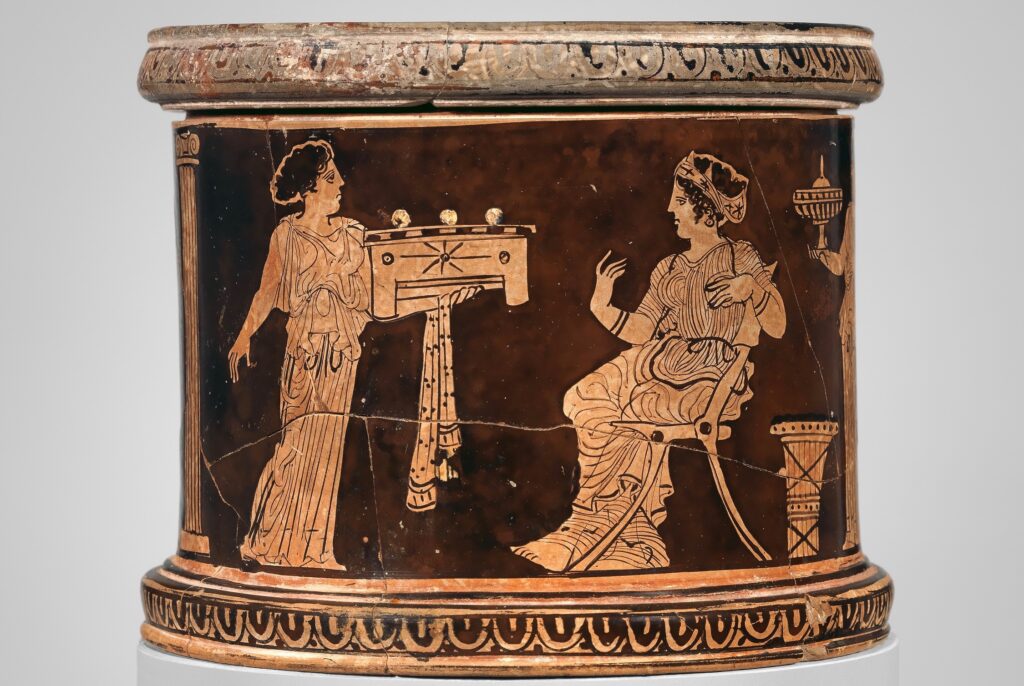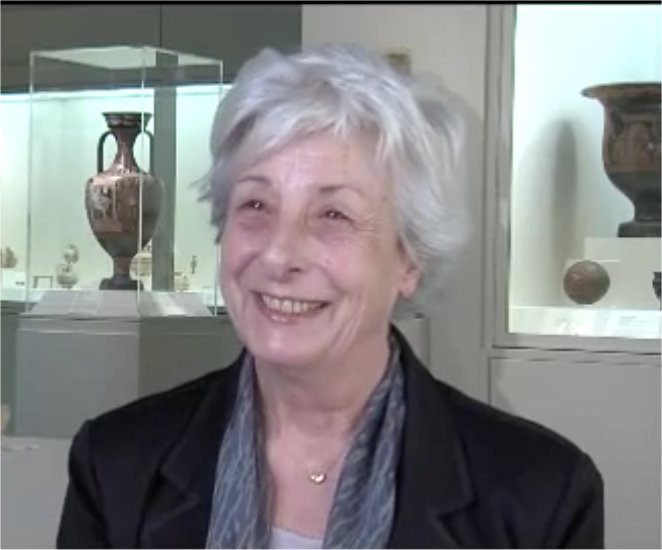Those who have been fortunate to be Gloria’s students or colleagues carry the distinctive imprint of her scholarship in their consciousnesses. This imprint includes specific details of her brilliant studies, so often proving invaluable in our research; but also the style of thinking, the perception of the world, which can be only approximately described with words such as clarity, elegance, originality, courage, and precision.
Gloria’s research shows how thinking about a culture as a set of interacting systems brings about thrilling surprises, in which we can discern previously oblique meanings emerging and participating in their dance. We would like to express our admiration and gratitude and to celebrate Gloria Ferrari’s pathfinding research by creating a festschrift on the occasion of her eightieth birthday. We envisage the process of the festschrift’s creation as a part of celebration of Gloria’s legacy, in a series of online workshops in which the participants may present their research in progress for Gloria’s volume.

Participants and Well-wishers
Carmen Arnold-Biucchi
Natasha Bershadsky
Ann Blair Brownlee
Jack Davis
Casey Due
Mary Ebbott
Hallie Franks
Harriet Guest
Guy Hedreen
Liane Houghtalin
Gregor A. Kalas
Mireille Lee
Olga Levaniouk
Gregory Nagy
Timothy M. O’Sullivan
Corinne Pache
David Petrain
Joan Reilly
Laurialan Reitzammer
Brunilde Ridgway
Felipe Rojas
Gina Salapata
Laura Slatkin
Penny Small
Ann Steiner
Tatiana Smoliarova
Kate Topper
Aaron Tugendhaft
Hilda Westervelt
Ann Marie Yasin

Provisional titles of Festschrift papers
Diliana Angelova, “The Semantics of Time on the Ara Pacis Augustae.”
Mary Ebbott and Casey Due, “Performing Pain: Men and Maidens in the Trachiniae of Sophocles.”
Hallie Frank, “Aphrodite’s aidos.”
Guy Hedreen, “Horace Ars poetica 1-13 on the painting of interspecies compound creatures: Reading Aristotle’s aesthetic principles in the light of Empedokles’ theory of the origin of species.”
Liane Houghtalin, “Hippolytus on a Sarcophagus from Salona.”
Olga Levaniouk and Natasha Bershadsky, “Maidens and Heifers.”
Gregory Nagy, “How a Classical Homer Occasionally Downgrades the Heroic Glory of Ajax in Order to Save it.”
David Petrain, “The circulation of Achilles’ shield on the Berthouville pitchers.”
Lauri Reitzammer, “Why is the Underworld on Olympus in Peace? The Representation of Divine Abodes in Aristophanes.”
Felipe Rojas, “Living Landscape Features in Greek and Roman Anatolia.”
Ann R. Steiner, “Forty Years After: Checking in on Gorgos.”
Timothy M. O’Sullivan, “Movement and Narration in Roman Art.”
Gina Salapata, “Hesperides and the Dragon: Loyalty or Treachery?”
Jocelyn Penny Small, “An Optical Illusion in Roman Wall Painting: A Niche Phenomenon.”

Biography of Gloria Ferrari Pinney
Gloria Ferrari Pinney is professor emerita of classical archaeology and art at Harvard University, where she taught from 1998 to 2003. She was previously a member of the faculty at Wilson College and at Bryn Mawr College, serving as the Doreen Canaday Spitzer Professor of Classical Studies from 1990 to 1993. In 1993 she moved to the University of Chicago. She has written on Roman art and ancient Greek art and poetry. Her 2003 monograph, Figures of Speech: Men and Maidens in Ancient Greece was awarded the 2004 Wiseman Book Award by the Archaeological Institute of America. Her latest book, Alcman and the Cosmos of Sparta (2008) is a study of one of the earliest lyric songs and its attendant imagery. These books are representative of recent interests, which have focused on the interpretation of images, the construction of genders, and broadly on the intersection of texts and monuments. Her current research deals with visual and literary representations of geography and with the issue of continuities from the Aegean Bronze Age into the Iron Age. She is a member of the American Philosophical Society.
Publications
(As Gloria Ferrari Pinney) “Homer in Houston.” Notes for the panel discussion “A Poet or a God: The Iconography of Certain Bearded Male Bronzes” at the National Gallery of Art, Washington, DC, February 25, 2016.) Classical Inquiries, 2016.03.07. https://classical-inquiries.chs.harvard.edu/homer-in-houston/.
“Anthropological Approaches.” The Oxford Handbook of Greek and Roman Art and Architecture, edited by Clemente Marconi. 2014. https://doi.org/10.1093/oxfordhb/9780199783304.013.028.
“History and its margins in the pictorial narrative of the Nile Mosaic at Praeneste.” In The Door Ajar: False Closure in Greek and Roman Literature and Art, edited by Farouk Grewing, Benjamin Acosta-Hughes, and Alexander Kirichenko, pp. 129–142. Heidelberg, 2013.
“The Tyranny of Eros in Thucydides’ History.” Donum natalicium digitaliter confectum Gregorio Nagy septuagenario a discipulis collegis familiaribus oblatum. Center for Hellenic Studies, 2012. https://chs.harvard.edu/gloria-ferrari-the-tyranny-of-eros-in-thucydides-history/.
Alcman and the Cosmos of Sparta. Chicago: The University of Chicago Press, 2008.
“Architectural Space as Metaphor in the Greek Sanctuary.” In The Artful Mind: Cognitive Science and the Riddle of Human Creativity, edited by Mark Turner, pp. 225–241. Oxford University Press, 2006. https://doi.org/10.1093/acprof:oso/9780195306361.003.0012.
“What kind of rite of passage was the Ancient Greek wedding?” In Initiation in Ancient Greek Rituals and Narratives: New Critical Perspectives, edited by David Dodd and Christopher A. Faraone, pp. 27–42. London: Taylor & Francis Group, 2003.
“Myth and Genre on Athenian Vases.” Classical Antiquity 22, no. 1 (2003): 37–54. https://doi.org/10.1525/ca.2003.22.1.37.
Figures of Speech: Men and Maidens in Ancient Greece. Chicago: University of Chicago Press, 2002.
“The Ancient Temple on the Acropolis at Athens.” American Journal of Archaeology 106, no. 1 (2002): 11–35. https://doi.org/10.2307/507187.
“The Ilioupersis in Athens.” Harvard Studies in Classical Philology 100 (2000): 119–50. https://doi.org/10.2307/3185212.
“The Geography of Time.” Ostraka 8 (2000): 359–86.
“Figures in the Text: Metaphors and Riddles in the Agamemnon.” Classical Philology 92, no. 1 (1997): 1–45. https://doi.org/10.1086/449329. [reprinted in Greek Literature, Routledge, 2001. https://doi.org/10.4324/9780203055892-1]
“Heracles, Pisistratus and the Panathenaea.” Métis 9 (1994): 219–26.
“Figures of Speech: The Picture of ‘Aidos.’” Métis 5, no. 1 (1990): 185–200.
“Felicior Augusto: Portrait Medallions in Glass and the Ravenna Relief.” Opuscula Romana 17: 33–60.
I vasi attici a figure rosse del periodo arcaico. Materiali del Museo archeologico nazionale di Tarquinia 11. Roma: GBretschneider, 1988.
(As Gloria Ferrari Pinney). “Pallas and Panathenaea.” In Proceedings of the 3rd Symposium on Ancient Greek and Related Pottery, edited by J. Christiansen and T. Melander, pp. 465–477. Copenhagen, 1988.
“Menelās.” The Journal of Hellenic Studies 107, no. 4.1 (1987): 180–82. https://doi.org/10.2307/630082.
“Eye-cup.” Revue Archéologique (1986): 5–20.
(As Gloria Ferrari Pinney) “For the Heroes are at Hand,” Journal of Hellenic Studies 104 (1984): 181-183.
(As Gloria Ferrari Pinney). “The Nonage of the Berlin Painter.” American Journal of Archaeology 85, no. 2 (1981): 145–58. https://doi.org/10.2307/505034.
Il commercio dei sarcofagi asiatici. Studia archaeologica (“Erma” di Bretschneider) 7. Roma: L’Érma” di Bretschneider, 1966.
Co-authored Articles
Ferrari, Gloria, and Richard Stone. “The End of Aponia.” Metropolitan Museum Journal 30 (1995): 17–18. https://doi.org/10.2307/1512946.
Pinney, Gloria Ferrari, and Brunilde Sismondo Ridgway. “Herakles at the Ends of the Earth.” The Journal of Hellenic Studies101 (1981): 141–44. https://doi.org/10.2307/629856.
Pinney, Gloria F., and Richard Hamilton. “Secret Ballot.” American Journal of Archaeology 86, no. 4 (1982): 581–84. https://doi.org/10.2307/504529
Reviews
Ferrari, Gloria. Review of Corpus vasorum antiquorum: USA 33: The J. Paul Getty Museum, Malibu 8, by Mary B. Moore. American Journal of Archaeology 104, no. 1 (2000): 136–38. https://doi.org/10.2307/506805.
Ferrari, Gloria. Review of Erotische Symbole. Lotosblüte Und Gemeinsamer Mantel Auf Antiken Vasen. Gnomon 63, no. 6 (1991): 539–42.
Pinney, Gloria Ferrari. Review of The Berlin Painter, by Donna Carol Kurtz. American Journal of Archaeology 88, no. 3 (1984): 419–21. https://doi.org/10.2307/504577.
Pinney, Gloria. Review of Norchia I, by Elena Colonna Di Paolo and Giovanni Colonna. American Journal of Archaeology 86, no. 3 (1982): 460–61. https://doi.org/10.2307/504450.
Pinney, Gloria Ferrari. Review of Greek Vase-Painting in Midwestern Collections, by Warren G. Moon. American Journal of Archaeology 85, no. 4 (1981): 503–4. https://doi.org/10.2307/504888.
Edited Volumes
Ferrari, Gloria, Christina M. Nielsen, and Kelly Olson (editors). The Classical Collection. David and Alfred Smart Museum of Art. Chicago: University of Chicago, 1999.
Aspects of Ancient Greece: An Exhibition Organized by the Allentown Art Museum with the Cooperation of Gloria Ferrari Pinney and Brunilde Sismondo Ridgway. Allentown Art Museum, September 16 through December 30, 1979. Allentown, PA: The Museum, 1979.
Video Presentations
(As Gloria F. Pinney) “The Legacy of Minos,” CHS Online Open House, 12.13.2018. [view handout]
https://youtu.be/N4MzY3yvoBg
(As Gloria Pinney) “Dancing at the Solstice: The Maidens on the Acanthus Column at Delphi.” A lecture at the University of Missouri as Phi Beta Kappa Visiting Scholar. March 1, 2012.


